We were promised pleasant weather today, and when we set off late morning to Elizabeth’s, it certainly looked that way. 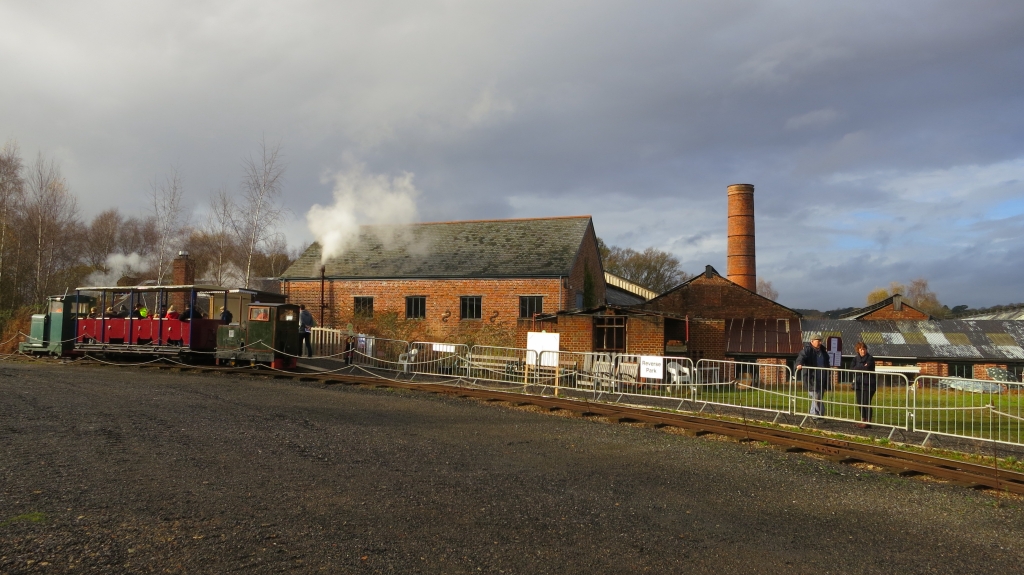 By midday the rain had begun again, just as we arrived at Bursledon Brickworks industrial museum. When we left, a little more than two hours later, it was teeming, and continued to be so for the rest of the afternoon.
By midday the rain had begun again, just as we arrived at Bursledon Brickworks industrial museum. When we left, a little more than two hours later, it was teeming, and continued to be so for the rest of the afternoon.
The trip to Bursledon had been arranged by Elizabeth for Mum to have a tour of the works on this their open day. Paul Robinson is a member of Elizabeth’s bookbinding class in Winchester. He is also a volunteer at the Brickworks, which was the last steam driven factory of its kind in the country. He patiently, amusingly, and informatively, gave us two hours of his time and attention. Mum managed, on her two sticks, to last the course. When it came to going upstairs, Paul carefully strapped her into a stairlift and stepped up alongside her to assuage her fears.
Until the rain set in for keeps, we had wandered around the outside area where people were being given rides in trucks tugged along by steam engines and trains;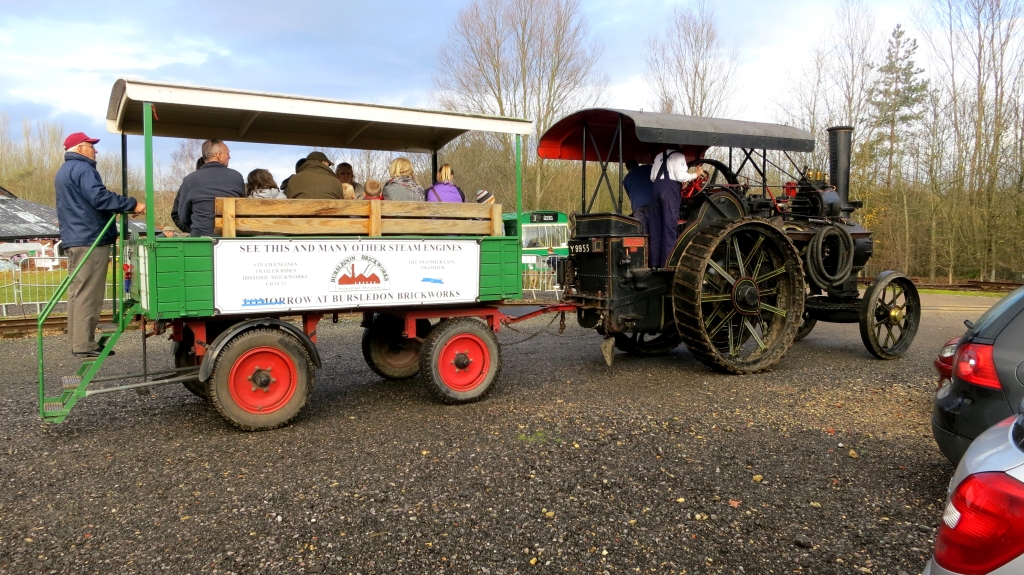 and where there was a display of steam driven vehicles and engines. Looking at the stacks of different bricks lining the railway tracks,
and where there was a display of steam driven vehicles and engines. Looking at the stacks of different bricks lining the railway tracks,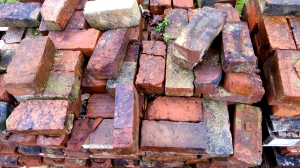 I speculated about whether any of the recycled bricks I had used to build the compost heaps earlier in the year could have been made at Bursledon. Speaking to a woman polishing the brass on one of the steam engines, Mum told of her childhood in Manchester where children with chest infections were led to steam rollers so they could inhale the supposedly curative fumes emanating from the creosote being laid on the roads.
I speculated about whether any of the recycled bricks I had used to build the compost heaps earlier in the year could have been made at Bursledon. Speaking to a woman polishing the brass on one of the steam engines, Mum told of her childhood in Manchester where children with chest infections were led to steam rollers so they could inhale the supposedly curative fumes emanating from the creosote being laid on the roads.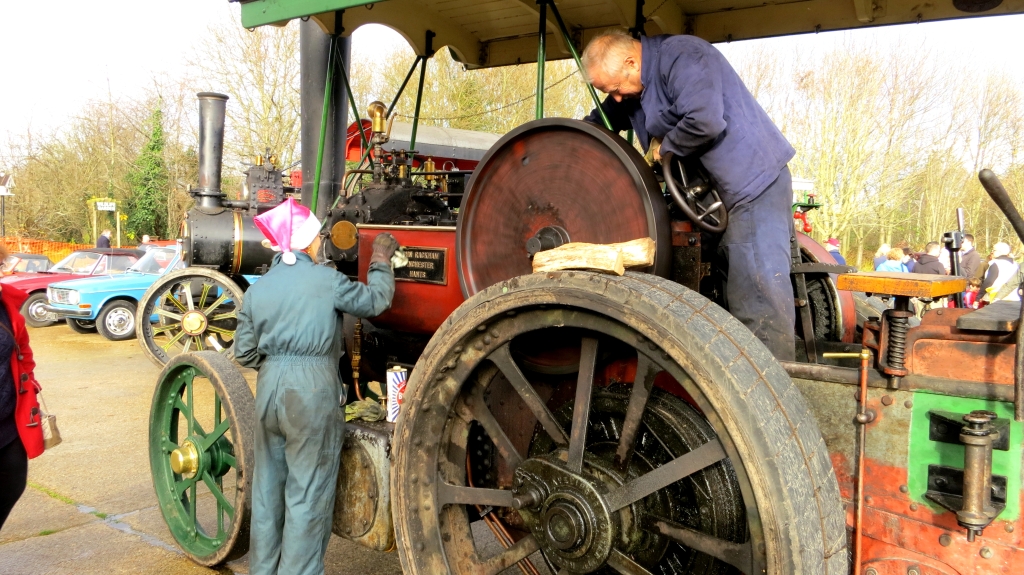 This was a free expectorant before the National Health Service made such medicines available to all. I remember these engines in the Stanton Road of my childhood. There would always be lots of sticky black tar with an intoxicating smell.
This was a free expectorant before the National Health Service made such medicines available to all. I remember these engines in the Stanton Road of my childhood. There would always be lots of sticky black tar with an intoxicating smell.
Upstairs, the display areas, where we were shown bricks, plasterwork, chimney pots, and war horses, were on slatted floorboards with gaps in between them. The war horses were small terra cotta horses which people had paid to make and decorate as a fundraising activity. One display was of a model roof and chimney pots showing the various ways in which lead had enhanced roofs. It was in a bit of a dark corner. In order to make it easier for Mum to see it, Paul unplugged an electric lead and plugged it in somewhere else. ‘Oi. You’ve turned off my light’, came a cry from below. ‘You’ve turned off mine’, cried Paul. Good-naturedly he gave the man back his light. Which was just as well, for the complainant was Santa in his grotto.
We were shown a plaster cast sculpture of a man who, at the age of 92 had still worked a nine hour day creating hand-made bricks at the rate of three bricks a minute, which was a better rate than anyone else. They were all on piece work in those days. One area which had long queues was where children could make such bricks. They paid £1 and could take their creations home with them.
Some years ago Paul had been told how the men working brick making machines gained their lunch or loo breaks. 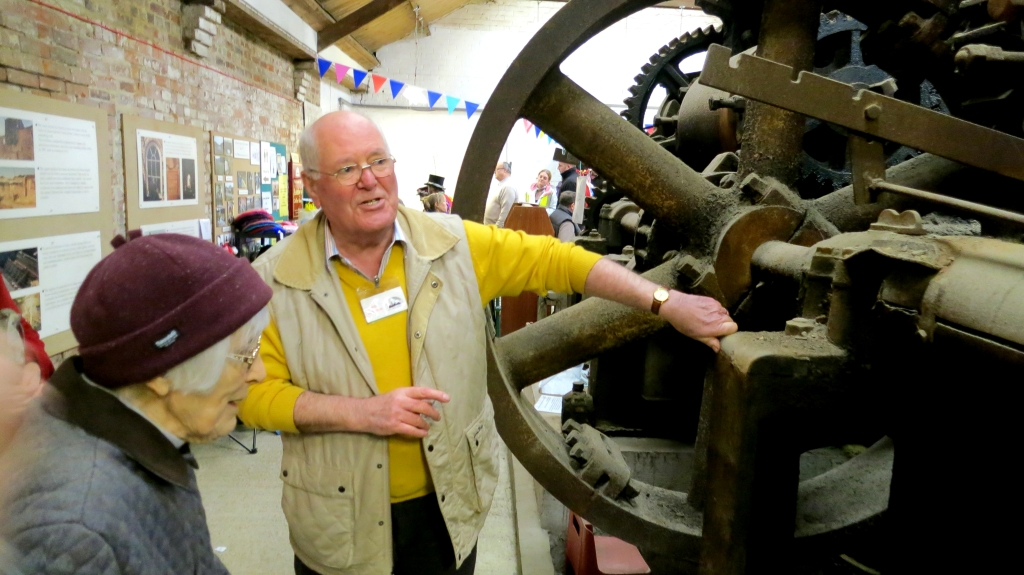 Scattered around the floor would be broken off bits of brick. These would be picked up and thrown into a kind of hopper in the machinery. The result was that the machine would sieze up. This gave the men the opportunity to take a rest. These fragments were called brickbats. Nowadays the word has come to mean criticism.
Scattered around the floor would be broken off bits of brick. These would be picked up and thrown into a kind of hopper in the machinery. The result was that the machine would sieze up. This gave the men the opportunity to take a rest. These fragments were called brickbats. Nowadays the word has come to mean criticism.
By the time we had returned to The Firs for lunch and Elizabeth had taken Mum home, we were just in time to take in the end of The First Gallery 38th. Christmas show and stay on for a couple of hours carol singing. This is the gallery of Margery Clarke who has featured at times in these posts. On 22nd November I explained the link between Norman, Margery, and Alvin Betteridge. I was therefore very pleased to see some of Alvin’s work on display, and to buy Norman a Christmas present of an owl made by this potter.
The carol singing was an entertaining mix of traditional carols and more secular works like ‘Enery the Eighth’, and Old Macdonald. The pianist was accompanied by her rather young black labrador who got very excited at the dog verse of ‘Old Macdonald Had A Farm’. After the singsong there was a raffle for the prize of a bear made by animal sculptor Suzie Marsh in aid of Animals Asia’s campaign to end bear bile farming. Elizabeth bought her tickets at the very last minute. She won the raffle.
After this entertainment the three of us dined at Eastern Nights on the usual excellent food; Bangla being drunk by Jackie, and Cobra by Elizabeth and me.

























